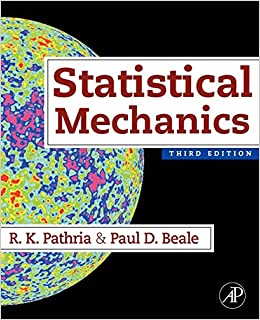A particle with spin (J) can be in any one of the ((2 J+1)) spin states characterized
Question:
A particle with spin \(J\) can be in any one of the \((2 J+1)\) spin states characterized by the spin functions \(\chi_{m}(m=-J, \ldots, J)\). For a pair of such particles, we will have \((2 J+1)^{2}\) spin states characterized by the symmetrized spin functions
\[
\chi_{m_{1}}(1) \chi_{m_{2}}(2) \pm \chi_{m_{1}}(2) \chi_{m_{2}}(1) \quad\left(m_{1,2}=-J, \ldots, J \right)
\]
Of these, \((2 J+1)\) functions, for which \(m_{1}=m_{2}\), can only be symmetric, for the corresponding antisymmetric combinations vanish identically. The remaining \(2 J(2 J+1)\) functions, for which \(m_{1} eq m_{2}\), can be symmetric or antisymmetric; however, only half of them are linearly independent functions (because an interchange of the suffices \(m_{1}\) and \(m_{2}\) does not produce anything new). Thus, in all, we have \(J(2 J+1)\) antisymmetric spin functions, and \((J+1)(2 J+1)\) symmetric spin functions, that are linearly independent.
Now the total wave function of the pair will be the product of a symmetrized space function (like the ones considered in the previous problem) and a symmetrized spin function (like the ones discussed above). For the total wave function to be symmetric, as required for a pair of bosons, we may associate any of the \((J+1)(2 J+1)\) symmetric spin functions with a symmetric space function or any of the \(J(2 J+1)\) antisymmetric spin functions with an antisymmetric space function. This will lead to the quoted expression for the coefficient \(b_{2}^{\mathrm{s}}\). On the other hand, for the total wave function to be antisymmetric, as required for a pair of fermions, we may associate any of the \(J(2 J+1)\) antisymmetric spin functions with a symmetric space function or any of the \((J+1)(2 J+1)\) symmetric spin functions with an antisymmetric space function. This will lead to the quoted expression for the coefficient \(b_{2}^{A}\).
Step by Step Answer:






